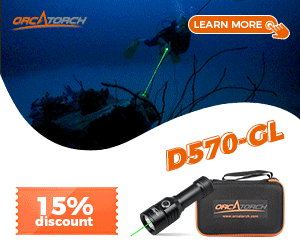Context:
I dive recreational sidemount on Vancouver Island in Canada so I'm in a drysuit year round. I'm currently using "vintage" LP72s that, according to specs found on scubaboard, are 0 lbs with valve when empty. This tallies with my experience diving them - the tails get floaty.
I can fill my own tanks and typically do a modest overfill on my LP72s to about 2800-3000PSI (180-200 bar) and feel pretty comfortable with this. Recently, I was cautioned against overfilling vintage tanks such as the LP72 (mine are circa 1976) due to thinner steel walls, though he did say that 3000 PSI wasn't too risky with appropriate valves and burst discs.
However, I just finished AN/DP with TDI and am considering getting some bigger tanks. Used steels are hard to come by in my area, so I'm between Faber LP85s and Faber HP100s since I can easily get them new.
I'm stuck looking at the spec sheet and I'm not seeing how people conclude that the Faber LP85s are "perfectly trimmed" throughout the dive when they are 2 lbs positive with valve when empty. Are they perfectly trimmed after adjusting them when they approach empty... just like AL80s? Or are they referencing older Fabers with different bouyancy characteristics?
Perhaps folks are referencing Worthington LP85s when they talk about being perfectly trimmed throughout the dive since those are -1 lb or so when empty. But they're also -7 lb when full, so taking them off and moving them around would be rather difficult? I tried my Worthington LP108s in the pool yesterday and they're -2 empty and -10.7 full. I could not hold one in front of me without it pulling me headfirst to the bottom of the pool. It seems unlikely to me that a Worthington LP85 or Faber HP100 at -7 lb and -8.4 lbs when full are much more maneuverable than the LP108 I tried to manhandle.
Questions:
1) Other opinions on filling vintage LP72s to 3000ish PSI regularly?
2) Are new Faber LP85s with positive buoyancy when empty really "perfectly trimmed" at all times without moving them?
2a) If not, is the option of cave filling them why they are so highly regarded compared to AL80s or HP100s?
3) The Worthington LP95 has very similar buoyancy characteristics to the LP108 and appears to have been widely used in caving with significant overfills. Does anyone still use them and how do you feel about unclipping them and maneuvering them?
Thanks all
I dive recreational sidemount on Vancouver Island in Canada so I'm in a drysuit year round. I'm currently using "vintage" LP72s that, according to specs found on scubaboard, are 0 lbs with valve when empty. This tallies with my experience diving them - the tails get floaty.
I can fill my own tanks and typically do a modest overfill on my LP72s to about 2800-3000PSI (180-200 bar) and feel pretty comfortable with this. Recently, I was cautioned against overfilling vintage tanks such as the LP72 (mine are circa 1976) due to thinner steel walls, though he did say that 3000 PSI wasn't too risky with appropriate valves and burst discs.
However, I just finished AN/DP with TDI and am considering getting some bigger tanks. Used steels are hard to come by in my area, so I'm between Faber LP85s and Faber HP100s since I can easily get them new.
I'm stuck looking at the spec sheet and I'm not seeing how people conclude that the Faber LP85s are "perfectly trimmed" throughout the dive when they are 2 lbs positive with valve when empty. Are they perfectly trimmed after adjusting them when they approach empty... just like AL80s? Or are they referencing older Fabers with different bouyancy characteristics?
Perhaps folks are referencing Worthington LP85s when they talk about being perfectly trimmed throughout the dive since those are -1 lb or so when empty. But they're also -7 lb when full, so taking them off and moving them around would be rather difficult? I tried my Worthington LP108s in the pool yesterday and they're -2 empty and -10.7 full. I could not hold one in front of me without it pulling me headfirst to the bottom of the pool. It seems unlikely to me that a Worthington LP85 or Faber HP100 at -7 lb and -8.4 lbs when full are much more maneuverable than the LP108 I tried to manhandle.
Questions:
1) Other opinions on filling vintage LP72s to 3000ish PSI regularly?
2) Are new Faber LP85s with positive buoyancy when empty really "perfectly trimmed" at all times without moving them?
2a) If not, is the option of cave filling them why they are so highly regarded compared to AL80s or HP100s?
3) The Worthington LP95 has very similar buoyancy characteristics to the LP108 and appears to have been widely used in caving with significant overfills. Does anyone still use them and how do you feel about unclipping them and maneuvering them?
Thanks all



